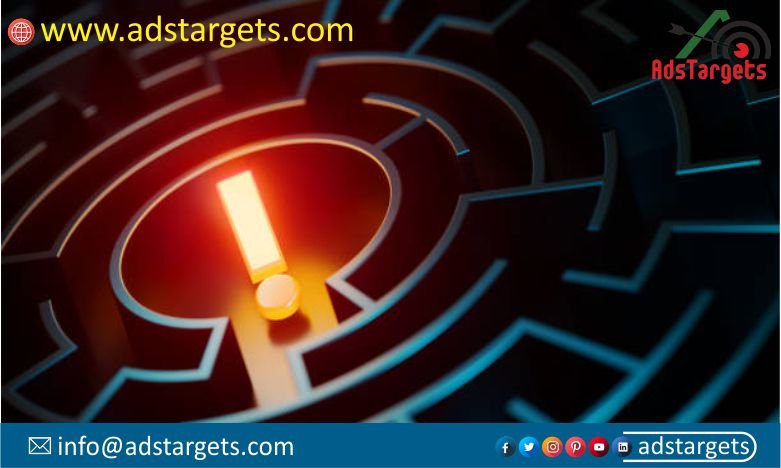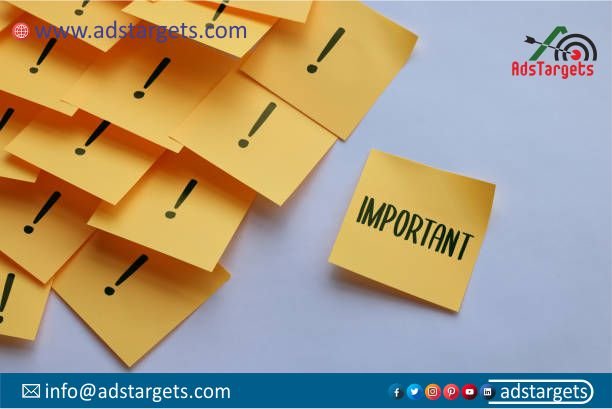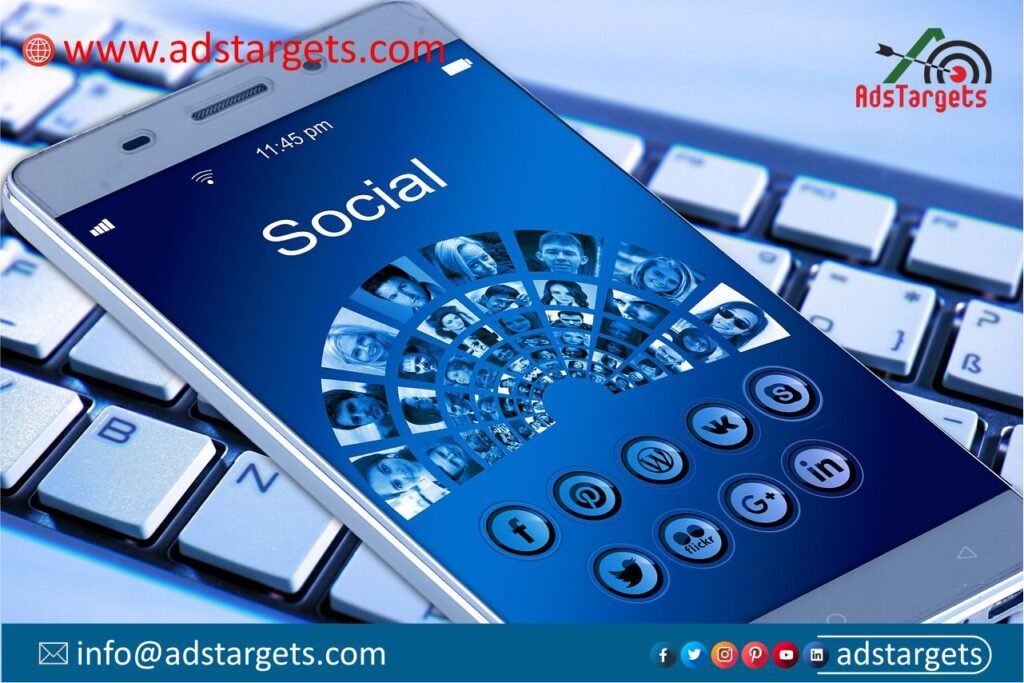Warning: Don’t ever let landing page mistakes sink your conversion rates!
Think your landing page is a conversion machine? Think again! Even the smallest mistakes can lead to a leaky funnel and a significant loss of sales.
From confusing headlines to sluggish load times, we will expose the most common landing page mistakes that are costing you a high bounce rate – money.
Landing pages are the digital gatekeepers to your brand’s success in the fast-paced digital sphere, where attention spans are short, and competition is intense.
These innocent-looking websites act as the welcome, the first point of contact, and the critical point at which users choose to proceed or quickly abandon their quest.
However, amidst the fervor of capturing attention and driving conversions, many businesses unwittingly stumble into common pitfalls that sabotage their landing page efforts.
From murky messaging to complex forms, the landscape is rife with potential missteps that can thwart even the most well-intentioned campaigns.
But fear not, brave marketer, for within these pages lies a treasure trove of insights, a roadmap to steer clear of the treacherous waters of landing page mistakes to avoid.
Join us as we embark on a journey to uncover the ten most common landing page mistakes and discover the strategies to navigate them with finesse and aplomb.
So, buckle up, dear reader, as we cross the terrain of digital marketing, unraveling the mysteries, and unlocking the secrets to crafting landing pages that captivate, convert, and compel users to take action.
Welcome to the adventure of a lifetime – where every click is a conquest and every conversion, is a conquest.

Table of Contents
ToggleCommon Landing Page Mistakes to Avoid and How to Fix Them
Landing page mistakes can significantly hinder the effectiveness of your marketing campaigns. Below are some common landing page mistakes to avoid and reduce bounce rates:
#1. Landing Page Mistakes: Lack of Clear Value Proposition

Your landing page should communicate the unique value proposition (UVP) of your product or service. Users should be able to grasp the benefits of what you are offering within seconds of arriving on your page.
A vague or convoluted message will only confuse and deter potential customers.
Fix: Ensure your UVP is concise, compelling, and prominently displayed.
#2. Landing Page Mistakes: Poor Visual Hierarchy
Visual hierarchy plays a crucial role in guiding visitors’ attention and steering them towards conversion points.
A cluttered layout, conflicting colors, or disproportionate elements can disrupt the flow and distract users from the primary call-to-action (CTA).
Fix: Maintain a clear visual hierarchy by using contrasting colors, strategic whitespace, and prominent CTAs to direct users toward desired actions.
#3. Landing Page Mistakes: Lengthy Forms
Long, cumbersome forms are a surefire way to discourage form submissions. Users are often hesitant to provide extensive personal information, especially if they’re unfamiliar with your brand.
Fix: Streamline your forms to capture essential information only, such as name and email address. Consider utilizing progressive profiling techniques to gather additional details over time, gradually building trust with your audience.
#4. Landing Page Mistakes: Unclear Call-to-Action
Your call-to-action (CTA) serves as the guiding beacon for users, signaling the next step in their journey. Ambiguous or generic CTAs like “Submit” or “Click Here” fail to entice action and diminish conversion rates.
Fix: Instead, opt for specific, action-oriented language that communicates the intended outcome, such as “Get Started,” “Download Now,” or “Request a Demo.”
#5. Landing Page Mistakes: Slow Page Load Speed
Users expect instantaneous access to information in today’s moving-train digital space. A slow-loading landing page not only frustrates visitors but also adversely affects search engine rankings and bounce rates.
Fix: Optimize your page load speed by minimizing image sizes, leveraging browser caching, and utilizing content delivery networks (CDNs) to ensure swift and seamless user experiences. Do bounce rate analysis.
#6. Landing Page Mistakes: Lack of Mobile Optimization
With mobile devices accounting for a significant portion of web traffic, neglecting mobile optimization is a cardinal sin in the area of landing page design.
Failure to adapt your landing page for various screen sizes and resolutions alienates a substantial portion of your audience and hampers conversion rates.
Fix: Implement responsive design principles to create a seamless experience across all devices and platforms.
#7. Landing Page Mistakes: Inadequate Social Proof
Social proof serves as a powerful validation of your product or service, assuaging doubts and instilling confidence in potential customers.
Testimonials, user reviews, case studies, and trust badges are all effective forms of social proof that lend credibility to your brand.
Fix: Integrate compelling social proof elements strategically throughout your landing page to reinforce trust and credibility.
#8. Landing Page Mistakes: Irrelevant or Distracting Content
Excessive or irrelevant content detracts from the primary objective of your landing page and dilutes its effectiveness. Every element on your page should serve a specific purpose and contribute to the overall conversion goal.
Fix: Eliminate unnecessary distractions such as irrelevant images, excessive text, or outbound links that divert users’ attention away from the main CTA.
#9. Landing Page Mistakes: Lack of A/B Testing
Assuming that your landing page is optimized from the get-go is a fallacy that can cost you valuable conversions.
A/B testing allows you to experiment with different elements, layouts, and messaging to identify the most effective combinations.
Fix: Continuously monitor and analyze key metrics such as conversion rates, bounce rates, and click-through rates to refine and optimize your landing page over time.
#10. Landing Page Mistakes: Failure to Analyze and Iterate
Launching your landing page is just the beginning of the optimization journey. Without ongoing analysis and iteration, you risk stagnation and missed opportunities for improvement.
Fix: Leverage web analytics tools such as Google Analytics to gain insights into user behavior, identify pain points, and uncover optimization opportunities.
Use this data to inform iterative improvements and refine your landing page for maximum effectiveness.
What is the Importance of Landing Pages?

Landing pages emerge as the cooks in the kitchen of a famous restaurant who do the whole work behind the scenes. A tasty meal is made by the cook but credit goes to the restaurant owner.
This can be likened to online success in the sprawling scenery of digital marketing, where every click counts and every conversion is a victory with the help of landing pages.
These seemingly simple web pages serve as the linchpin of your marketing efforts, bridging the gap between visitor interest and tangible action.
But what exactly makes landing pages so indispensable in the area of digital commerce?
Let us go through the versatile importance of landing pages and unravel their pivotal role in driving business growth and fostering meaningful connections with your audience.
#1. First Impressions Matter:
They say you never get a second chance to make a first impression, and nowhere is this truer than in the digital realm.
Landing pages serve as the digital welcome mats to your brand, offering visitors their inaugural glimpse into what you have to offer.
A well-crafted landing page sets the tone for the entire user experience, captivating attention, and enticing users to delve deeper into your offerings.
#2. Tailored Messaging for Targeted Audiences:
Unlike generic web pages, landing pages are meticulously crafted to cater to specific audience segments or marketing campaigns.
Tailoring your messaging and design to resonate with the unique needs and preferences of your target audience, landing pages can significantly increase engagement and conversion rates.
Whether it is promoting a new product, offering a limited-time discount, or enticing users to sign up for a newsletter, landing pages allow you to deliver targeted messaging that speaks directly to your audience’s desires.
#3. Conversion Catalysts:
At their core, landing pages are designed to convert visitors into leads, customers, or subscribers.
Through presenting a clear call-to-action (CTA) and removing distractions that might divert attention elsewhere, landing pages streamline the conversion process and guide users toward desired outcomes.
Be it making a purchase, filling out a form, or downloading a resource, landing pages provide a focused environment where visitors can take action with minimal friction.
Beware; they are landing page mistakes that can thwart your conversion rates. Avoid them.
#4. Data-driven Optimization:
One of the greatest advantages of landing pages lies in their measurability and trackability. Through the use of analytics tools, marketers can gather valuable insights into visitor behavior, engagement metrics, and conversion rates.
This wealth of data allows for continuous optimization and refinement of landing pages to maximize their effectiveness over time.
By testing different elements, experimenting with new strategies, and analyzing performance metrics, marketers can iteratively improve their landing pages to achieve optimal results.
#5. Seamless Integration with Marketing Campaigns:
Landing pages are versatile tools that can be seamlessly integrated into various marketing campaigns and channels.
Whether it is email marketing, social media advertising, pay-per-click (PPC) campaigns, or search engine optimization (SEO) efforts, landing pages provide a dedicated destination where visitors can be directed to take specific actions.
By aligning landing pages with your overarching marketing objectives and strategies, you can create cohesive, end-to-end experiences that drive results and maximize ROI.
How to Design a Landing Pages That Convert
Designing a landing page that converts requires a strategic blend of compelling visuals, persuasive copy, intuitive navigation, and seamless user experience.
Below is a step-by-step guide to crafting high-converting landing page mistakes free:
#1. Define Your Objective:
Before diving into design, clarify the primary objective of your landing page.
This could be generating leads, driving sales, promoting a webinar, or encouraging sign-ups, a clear understanding of your goal will inform every aspect of your design decisions.
#2. Know Your Audience:
Understanding your target audience is paramount to designing a landing page that resonates with them.
Conduct thorough research to identify their pain points, preferences, and motivations. Tailor your messaging, imagery, and design elements to speak directly to their needs and interests.
#3. Craft a Compelling Headline and Subheadline:
Your headline is the first thing visitors see upon landing on your page, so make it count.
Create a concise, attention-grabbing headline that communicates the unique value proposition of your offer.
Follow it up with a compelling subheadline that elaborates on the benefits and entices further exploration.
#4. Use High-Quality Visuals:
Visuals are powerful tools for capturing attention and conveying information quickly.
Incorporate high-quality images, videos, and graphics that complement your messaging and reinforce your brand identity.
Choose visuals that resonate with your audience and evoke the desired emotional response.
#5. Highlight Key Benefits:
Clearly articulate the key benefits of your offer to users. Use bullet points or concise paragraphs to highlight the value proposition and explain how your product or service solves their problems or fulfills their needs.
Focus on the benefits rather than the features to create a compelling argument for conversion.
#6. Design Clear Call-to-Action (CTA) Buttons:
Your call-to-action (CTA) is the gateway to conversion, so make it prominent and compelling. Use action-oriented language that prompts users to take the desired action, such as “Sign Up Now,” “Get Started,” or “Buy Now.”
Make sure your CTA button stands out visually and is easily clickable.
#7. Optimize for Mobile Responsiveness:
With the majority of internet traffic coming from mobile devices, it is crucial to ensure your landing page is optimized for mobile responsiveness.
Adopt responsive design principles to ensure seamless rendering and functionality across various screen sizes and resolutions. Prioritize mobile users’ experience to maximize accessibility and engagement.
#8. Minimize Distractions:
Eliminate unnecessary distractions that might divert users’ attention away from your primary CTA. Keep the layout clean and uncluttered, with minimal navigation menus, outbound links, or extraneous content.
Maintain a clear visual hierarchy that guides users’ focus towards the conversion goal.
#9. Incorporate Social Proof

Social proof serves as a powerful validation of your offer’s credibility and reliability. Incorporate testimonials, user reviews, ratings, and trust badges to instill trust and confidence in potential customers.
Highlight positive experiences and endorsements to reassure visitors and alleviate concerns.
#10. Test and Iterate
Once your landing page is live, don’t rest on your laurels. Implement A/B testing to experiment with different elements, layouts, and messaging to identify the most effective combinations.
Continuously monitor and analyze key metrics such as conversion rates, bounce rates, and engagement metrics to inform iterative improvements and refine your landing page for maximum effectiveness.
Following these steps and focusing on creating a seamless user experience that addresses your audience’s needs and motivations, you can design a landing page that not only captures attention but also drives meaningful conversions.
What Role do Visuals play on avoiding Landing Page mistakes?
Visuals play a crucial role on a landing page, impacting user engagement, comprehension, and conversion rates. Below are the key roles that visuals serve to avoid landing page mistakes:
#1. Capturing Attention:
High-quality images and videos grab the visitor’s attention quickly, helping to reduce bounce rates. Visuals help create a strong first impression, conveying professionalism and quality.
#2. Enhancing Understanding:
Images, infographics, and videos can effectively demonstrate product features and benefits, making complex information easier to digest. Visuals can tell a story more effectively than text alone, creating an emotional connection with the visitor.
#3. Breaking Up Text:
Visuals break up large blocks of text, making the content more engaging and less intimidating to read. Strategically placed visuals guide the visitor’s eye through the page, directing attention to key messages and CTAs.
#4. Building Trust and Credibility:
Photos of real people, such as team members or satisfied customers, can make the brand feel more trustworthy and approachable. Visual testimonials, logos of well-known clients, and trust badges can enhance credibility and encourage conversions.
#5. Supporting Calls-to-Action:
Visual elements such as arrows, contrasting colors, and buttons can draw attention to the call-to-action, increasing the likelihood of conversions. Visuals like countdown timers or limited offer banners can create a sense of urgency, prompting immediate action.
#6. Improving User Experience:
Interactive visuals, such as sliders or clickable images, can increase user engagement and time spent on the page. Visual cues and icons help improve navigation, making it easier for users to find what they’re looking for.
#7. Reinforcing Branding:
Consistent use of colors, fonts, and imagery strengthens brand identity and helps visitors remember your brand. Unique and visually appealing design sets your landing page apart from competitors, making it more memorable.
Best Practices for Using Visuals to avoid Landing Page Mistakes
#1. High Quality: Use high-resolution images and professional-quality videos to maintain a polished look.
#2. Relevance: Ensure all visuals are directly relevant to the content and purpose of the landing page.
#3. Loading Speed: Optimize images and videos to ensure fast loading times, which is critical for user experience and SEO.
#4. A/B Testing: Regularly test different visuals to see which ones perform best in terms of engagement and conversions.
Through effectively incorporating visuals into your landing page, you can create a more engaging, informative, and persuasive experience for visitors, ultimately leading to higher conversion rates and avoiding mistakes.
Conclusion
Landing page mistakes can mar your whole aim and throw your success down the drain. Instead, embrace the power to avoid them from the time of creation, or fix them when they are already made.
This will unlock the gateway to greater engagement, conversion, and growth for your brand.
Crafting a high-converting landing page requires careful attention to detail and a deep understanding of user psychology.
They are far more than just static web pages – they are dynamic, strategic assets that play a crucial role in the success of your digital marketing initiatives.
From capturing attention and driving conversions to gather valuable insights and optimizing performance, they are indispensable tools for businesses looking to thrive in the competitive arena of the digital age.
Why not work hard to avoid the common landing page mistakes and achieve your goal with ease?
These common pitfalls can simply be avoided by implementing the fixes and having landing pages that captivate, convert, and compel users to take action.
Keep in mind, that the journey towards optimization is ongoing, so never underestimate the power of continuous testing, iteration, and refinement in your quest for landing page perfection.
By all means, avoid these common landing page mistakes.









